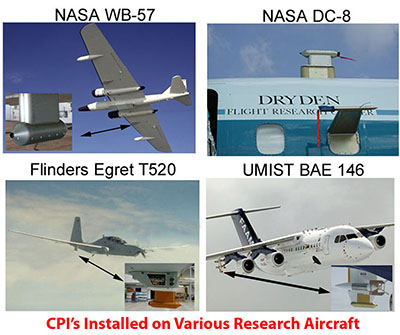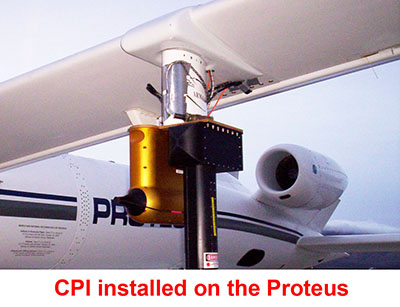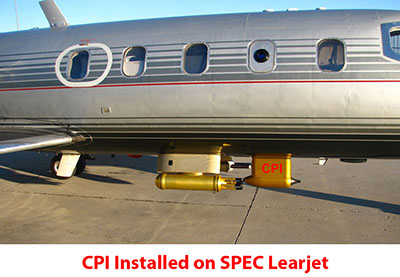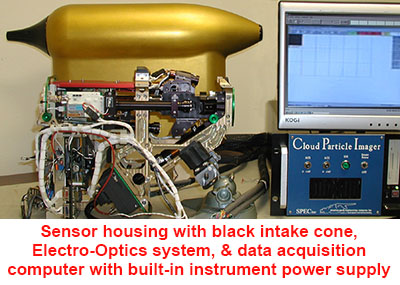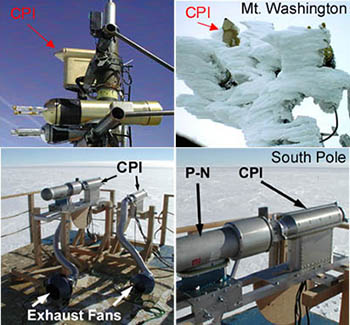Cloud Particle Imager (CPI)
Optional page type selection for this item:
Instrumentation
Image for Instrumentation or Services Page:
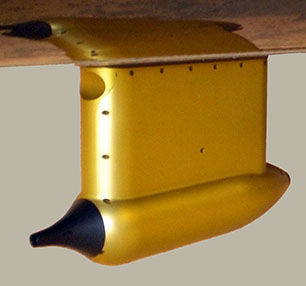
Highlights of the Cloud Particle Imager (CPI)
- The CPI records high-resolution (2.3 micron pixel size) digital images of particles (see examples) that pass through the sample volume at speeds up to 200 m/s. It is offered with two camera frame rates: The Version 2.0 flashes up to 74 frames per second (fps) and the Version 2.5 images particles at rates up to 400 fps. Each frame can potentially image more than 25 particles per frame.
- Real time image processing crops particle images from the full frame, eliminating blank space and compressing data by >1000:1
- CPI’s have been flown unattended on the NASA WB-57F and the Scaled Composites Proteus using artificial intelligence real-time software control.
- CPI images and housekeeping parameters are displayed in real time on the aircraft. Post-processing software (source code provided) also displays images, derives perimeters around particles, calculates lengths, widths, and areas, automatically distinguishes water drops from ice particles and classifies ice crystal habit. Data can be output in ascii format for further analysis. Learn more about post-processing capabilities in CPIview Training Manual. CPIs have been installed on over 20 research aircraft and operated in many field campaigns including:
- NASA TRMM
- NASA EOS
- NASA CAMEX
- NSF SHEBA
- NSF Antarctica Program
- NCAR/FAA MWISP
- DOE ARM
- Canadian Atlantic Storms Project
- Canadian, Freezing, Drizzle Experiment
- Alliance Icing Research Study
- NSF Wave Cloud Study
- DOE Emerald Project,
- NASA Crystal-Face
- NASA MidCix
- NSF RICO
- NASA CR-AVE
- NASA TC4
- NASA NAMMA
- DOE SPARTICUS
- NSF ICE-T
The CPI was designed for the extremes of aircraft flight—vibrations, rapid pressure changes and temperatures to -70°C, the instrument is easily capable of operating in harsh ground-based conditions. The top panels show the CPI during the Mount Washington Icing Sensors Project (MWISP) in 1998. Mount Washington's notorious high winds and heavy icing created large amounts of rime ice (top right). While other instruments were inoperative in these conditions, heaters in the CPI kept it functioning throughout the storm. The lower panels show two CPIs set up on a platform above the surface at the South Pole. One of the CPI’s has the French LaMP Polar Nephelometer (P-N) joined at the end of the CPI sample tube. An exhaust fan is used to aspirate both CPIs creating a constant wind speed through the sample volume. Both CPIs operated continuously for one week imaging over one million ice crystals (see examples in journal publication). The CPI has also been used to record images of ice particles in cloud chambers in the Germany (AIDA), Japan (MRI) and the US (CSU).Ground-Based Operation of CPI
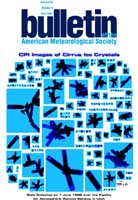 CPI Images on cover of BAMS (click to enlarge) |

